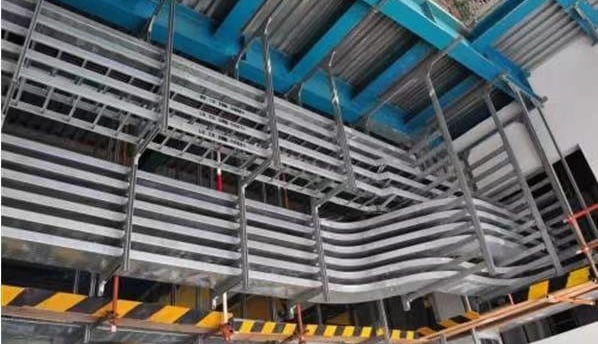Cable Ladders vs Cable Trays: A Comprehensive Guide to Cable Management Solutions
Learn about the differences between cable ladders and cable trays, their uses in industrial environments, and how they enhance safety and efficiency in projects. Find out which solution is best for your specific needs.
8/14/20242 min read


Introduction to Cable Management Solutions
In industrial environments, effective cable management is crucial for ensuring safety, efficiency, and accessibility. Two prevalent solutions that engineers rely on for handling cables are cable ladders and cable trays. Each serves distinct purposes and offers unique advantages depending on the project requirements.
What is a Cable Ladder Used For?
A cable ladder is known for its robustness and is the preferred choice for supporting heavy-duty cables, even over extended distances. Engineers use cable ladders to distribute and carry large amounts of wiring, thereby enhancing the overall safety of the space in the plant. Cable ladders offer a durable and reliable framework, making them especially useful in environments where the cables need to be supported horizontally or vertically across significant gaps. Additionally, their open structure allows for excellent ventilation which helps in reducing the heat buildup created by high power cables.
The Role of Cable Trays in Project Planning
Cable trays, also known as troughs or ventilated cable trays, are another effective method for managing cables. Plant engineers often use cable trays during the planning phase of projects because they provide flexibility. One of the key benefits of cable trays is that they allow engineers to lay additional cables easily as the project evolves. Unlike conduit piping, which can be challenging to modify or expand, cable trays facilitate straightforward adjustments. This adaptability is crucial for dynamic projects where requirements can change rapidly.
Comparing Cable Ladders and Cable Trays
While both cable ladders and cable trays are essential for managing cables, their differences make them suitable for specific applications. Cable ladders are ideal for supporting larger, heavier cables over long distances due to their strength and stability. Their open design also permits better airflow. On the other hand, cable trays excel in project planning and evolution, as they allow for easier modifications and additions of cables. Engineers prefer cable trays for environments where versatility in cable management is required.
Conclusion
In summary, both cable ladders and cable trays play vital roles in enhancing the safety and efficiency of industrial projects. The choice between using a cable ladder or a cable tray depends on the specific needs of the project, such as the type of cables being used, the distance they need to cover, and the potential need for future modifications. Understanding these tools and their applications helps engineers design and execute projects more effectively, ensuring that the finished systems are both robust and adaptable.
Songyin Kunshen
上海松隐坤申贸易有限公司
Quality, innovation, direct customer relationships, safer, efficient, sustainable
© 2024. All rights reserved.


